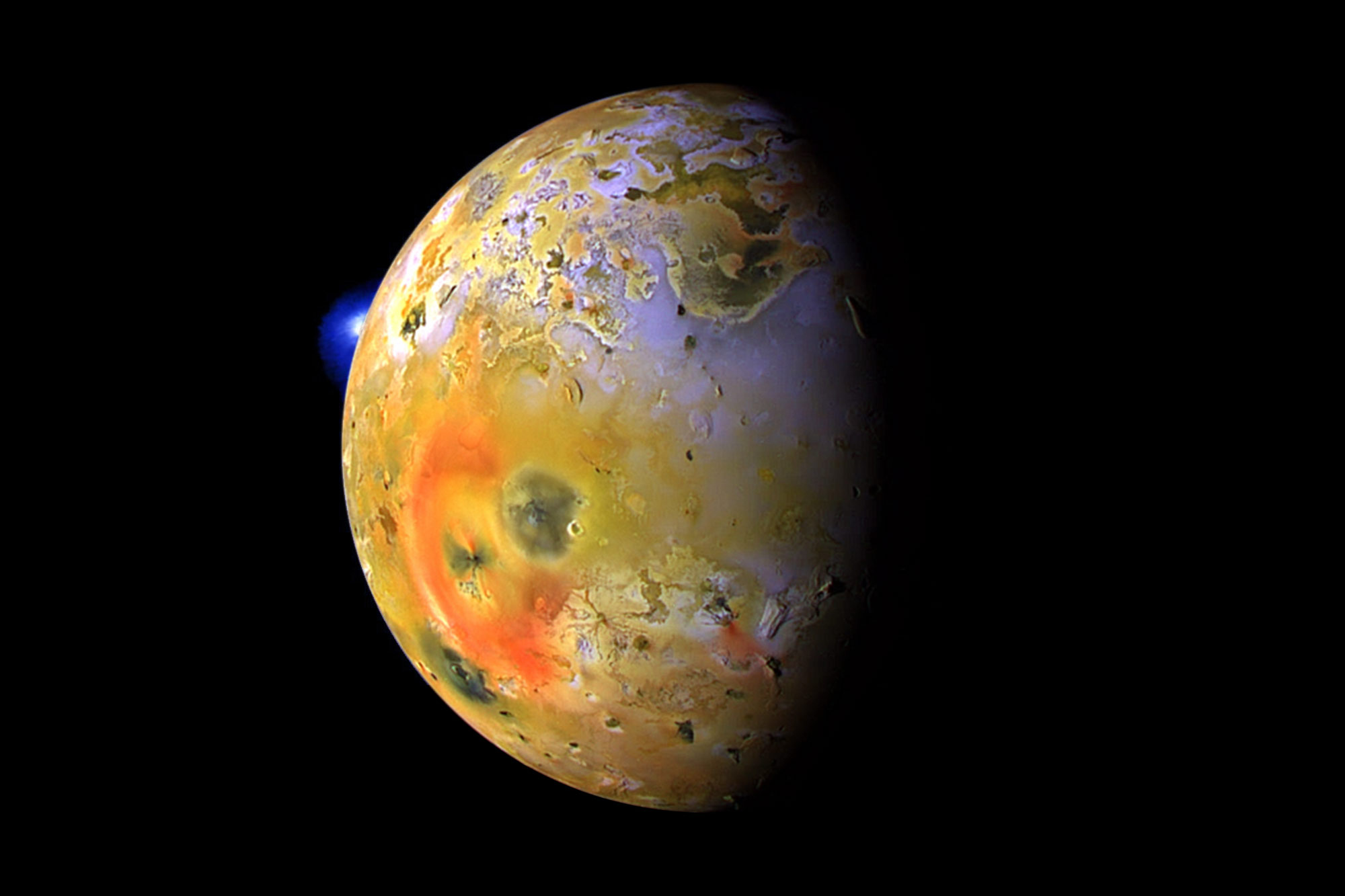Taking advantage of a rare orbital alignment between two of Jupiter’s moons, Io and Europa, researchers used an infrared camera designed and built by University of Virginia astronomers to obtain an exceptionally detailed map of the largest lava lake on Io, the most volcanically active body in the solar system.
On March 8, 2015, Europa passed in front of Io, as viewed from Earth, gradually blocking out light from the volcanic moon. Because Europa’s surface is coated in water ice, it reflects very little sunlight at infrared wavelengths, allowing researchers to accurately isolate the heat emanating from volcanoes on Io’s surface.
The infrared data showed that the surface temperature of a massive molten lake on Io steadily increased from one end to the other, suggesting that the lava had overturned (the cooler, heavier surface crust sinking and exposing the brighter magma beneath) in two waves that each swept from west to east at a rate of about 3,300 feet per day.

Astronomer Mike Skrutskie heads a UVA lab that designs astronomical instruments. (Photo by Sanjay Suchak, University Communications)
The findings were published earlier this month in the journal Nature.
Lava lakes overturn because the cooling surface crust slowly thickens until it becomes denser than the underlying magma and sinks, pulling nearby crust with it in a wave that propagates across the surface. As the crust breaks apart, magma may spurt up as fire fountains, akin to what has been seen in lava lakes on Earth, but on a smaller scale.
Overturning lava is a popular explanation by astronomers for the observed periodic brightening and dimming on Io of Loki Patera, a bowl-shaped volcanic crater about 127 miles across, with a hot-region surface area larger than Lake Ontario. It is the most active volcanic site on the moon, which itself is the most volcanically active body in the solar system.
Earth-bound astronomers first noticed Io’s changing brightness in the 1970s, but only when the Voyager 1 and 2 spacecraft flew by in 1979 did it become clear that this was because of volcanic eruptions on the surface. Despite highly detailed images from NASA’s Galileo mission in the late 1990s and early 2000s, astronomers have debated whether the brightenings at Loki Patera – which occur every 400 to 600 days – are due to overturning lava in the massive lava lake, or periodic eruptions that spread lava flows over a large area.

The key to making the finding was the use of a UVA-designed, heat-sensing camera that is part of the Large Binocular Telescope Observatory in Arizona. Astronomers were able to map the entire patera on Io, demonstrating that volcanic activity there is more complex than previously understood.
“There was so much infrared light available that we could slice the observations into 1/8-second intervals, during which the edge of Europa advanced only a few kilometers across Io’s surface,” said UVA astronomer Michael Skrutskie, a study co-author who years ago led the development of the instrument used for the investigation. “Loki was covered from one direction but revealed from another, just the arrangement needed to make a real map of the distribution of warm surface within the patera.”
Using information on the temperature and cooling rate of magma derived from studies of volcanoes on Earth, the researchers were able to calculate how new magma had been exposed at the surface.
“If Loki Patera is a sea of lava, it encompasses an area more than a million times that of a typical lava lake on Earth,” said Katherine de Kleer, a graduate student at the University of California, Berkeley who led the study involving astronomers at several institutions.

Time sequence of images taken before, during and after the occultation of Loki Patera by Europa, as well as an image after Europa had fully cleared Io’s face. These are four of about 3,000 images obtained on March 8, 2015.
Media Contact
Article Information
May 26, 2017
/content/uva-built-instrument-plays-key-role-mapping-lava-lake-jupiter-moon

